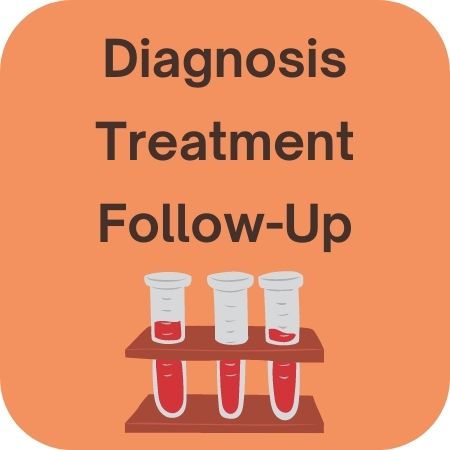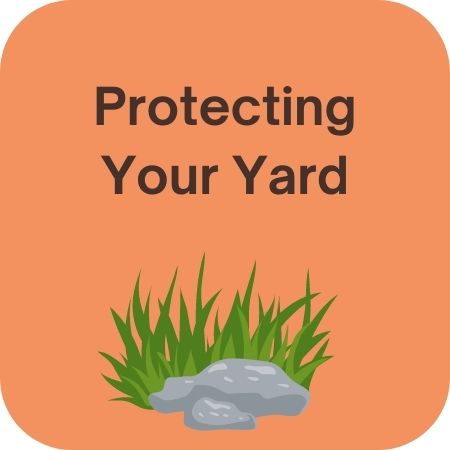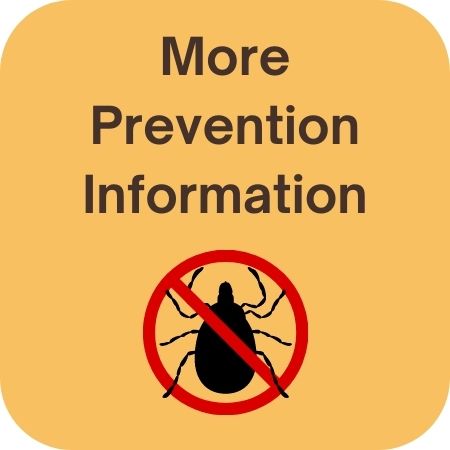Tickborne Diseases

Tickborne diseases can be passed onto humans through the bite of an infected tick. Not all ticks carry disease, but infected ticks can attach to a human and spread diseases if attached for a long enough time (minutes to days). Check for ticks regularly. If you find a tick attached to you, remove it as soon as possible to lower your chances of getting sick. See a healthcare provider if you have symptoms after.
Common tickborne diseases/conditions in New Jersey include:
- Lyme disease
- Babesiosis
- Ehrlichiosis
- Rocky Mountain Spotted Fever
- Anaplasmosis
- Alpha-gal Syndrome
Symptoms of tickborne diseases may include:
- Body/muscle aches
- Fever
- Headaches
- Fatigue
- Joint pain
- Rash
- Stiff neck
- Paralysis
- Tick paralysis is often a rare, temporary condition that causes weakness or paralysis that gradually moves up the body. Patients typically regain movement within 24 hours of removing the tick.
Tick-Prevention Tips
There are proven strategies to prevent tick bites and tickborne diseases.
 |
Recognize tick habitats. Ticks live in grassy, brushy, or wooded areas. They can also live in leaf litters or on animals. When walking in these environments, keep in the center of trails and avoid brushing against vegetation. |
 |
If able, wear long pants, long sleeves, and a hat. Light-colored clothing can make it easier to spot ticks. Ticks usually latch onto feet/legs and crawl up, so tuck your pants into your socks. |
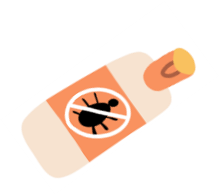 |
Use EPA-registered insect repellent, such as 20-30% DEET. Reapply repellents as directed on the bottle. |
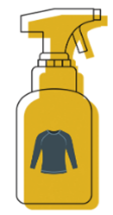 |
Treat clothing with permethrin spray or buy clothing that is pre-treated with permethrin. Follow instructions on the bottle. Permethrin is an EPA-registered insecticide that kills ticks on contact. Treated clothing provides protection through several washings. DO NOT apply on skin. |
 |
Use a tick-preventative on cats and dogs as recommended by your veterinarian. |
 |
Check yourself and your pets for ticks. Ticks like dark, humid areas. Make sure to check your hair, underarms, ears, belly button, and groin. |
 |
Shower within 2 hours after being outdoors. Showers can wash off unattached ticks, and they are opportunities to check for other ticks. |
 |
Tumble-dry clothes on high heat for 10 minutes to kill ticks present. If the clothes require washing first, hot water is recommended. |
What to do With a Tick
If you find a tick attached to you, remove it as soon as possible. After removal of a tick, it is important to watch for any signs of tickborne disease.
To remove a tick:
- Use fine-tipped tweezers to grab the tick as close to the skin’s surface as possible.
- Pull upward with steady, even pressure. Don’t twist or jerk the tick. If you are unable to remove the mouth parts easily, leave them alone and let the skin heal.
- After removing the tick, carefully clean the bite area and your hands with rubbing alcohol or soap and water.
- Ticks can be flushed down the toilet, placed in rubbing alcohol, or placed tightly into tape.

Do not use petroleum jelly, hot matches, nail polish remover, or other products to remove a tick. The goal is to remove the tick as quickly as possible – not waiting for it to detach.
Click Buttons Below for More Info



